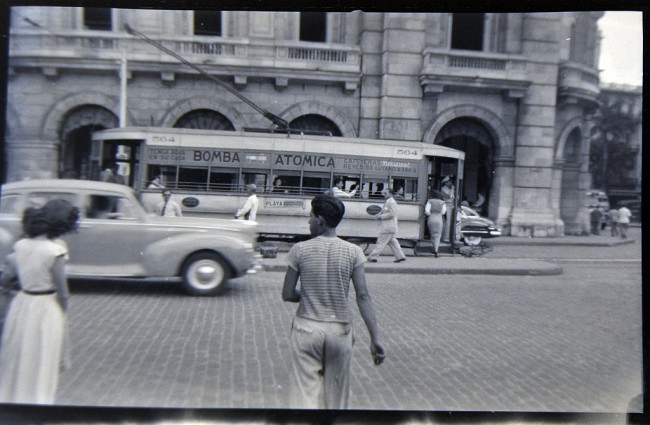
Public transport has always been an unresolved issue for Fidel Castro’s government. In Havana, in particular, where after the trams were taken out in the early 1950s, the bus service was among the best of all the most important cities in the world.
In the 1980s, when the county had a direct pipeline to the resources of the Kremlin, Hungary and other countries of the old socialist block, in the village of Guanajay, 60 kilometers from the capital, they set up a factory to assemble Ikarus buses. This did not prevent movement from one part of the city to another being a disaster.
At the time of the greatest material abundance of the olive-green Revolution, when you could buy yogurt and milk without a ration card, 2,500 buses and about 5,000 taxis circulated in the capital. But even still the deficit in public transport was not eased.
With the arrival of the silent war called “the special period,” after the collapse of communism in the Soviet Union and Eastern Europe, traveling around the city was a feat worthy of an Indiana Jones adventure. There were times when some bus routes operated only twice a day. Then they made their appearance with the famous “camels,” trucks towing large trailers that could fit up to 300 people, squished in like sardines. Real saunas, and places for pickpockets and sexual perverts.
People walked up to 20 kilometers a day to conduct their business, visit a friend or family member. The main streets were deserted and dark as the power was cut off up to 16 hours a day. On that chaos, the heavy Chinese bicycles were introduced, which caused fatal traffic accidents to skyrocket.
Not to mention the escalating violence. The streets of Havana were competing with those of Medellin or Rio de Janeiro. In order to steal your bicycle, the thieves were just as likely to chop you with a machete or slit your throat, as they caught you by stretching a rope across the dark street, when you passed on your bike.
With the passing of time, to the buses and “camels” they added “Haley’s comet.” Castro 1, preoccupied with his delusions of helping Third World countries, and squandering the meager public funds in economic nonsense and meaningless plans, landed to reality in 2004. And looking stupid in the Assemblies of People’s Power, he asked what the Minister in charge was doing to resolve the transport crisis.
As always, el comandante blamed the failure on others. But he realized that if he wanted the economy to grow, he would have to take some money from the bank to buy buses, trucks and locomotives. From China and Russia they bought about 5,000 buses and an equal number of trucks.
Urban transport, starved, saw the manna when they started to roll out 460 Yutong, Liaz and Maz buses throughout the city. The bus company began to operate 17 routes designated with the letter P, that today run on Havana’s main arterials.
In peak hours, the P routes run every 5 to 10 minutes. They are always full to bursting and hot as an oven. But for want of bread, cassava. The much vaunted improvement that the city’s leaders boast about is pure mirage.
Today, one-third as many buses are operating in the city as in 1988. It makes sense that a city of more than two million people, like Havana, if you want it to function even minimally, must have bus service capable of carrying a million people who move around the city every day.
Lacking a subway or suburban train, and where taxi service in national currency has disappeared, the only viable option for the citizenry is to take the congested P routes. Still, moving from the main central avenues to a marginal neighborhood on outskirts is a complicated story.
The bus service in the major neighborhoods and peripheral areas is a calamity. With the downturn in the economy due to the two crises, the world financial crisis and the one we have suffered for 21 years as a result of the Special Period, the plans to expand public transport have been shelved.
With the cutting of the frequency of trips, heading out with the family on the weekend is quite inconvenient. The buses known as the P routes are packed and run up to 30 minutes late on Saturdays and Sundays.
To make matters worse, among the staff of the bus company it is rumored that the due to the usual default on part of the Cuban government, the providers will not guarantee to supply parts for the years to come.
To go from one zone to another in the city could become an inferno. And the hard years of the 1990s, when a bus was as rare as a spaceship, could return. Although never, to be perfectly honest, has a bus ride in Havana been easy or pleasant.
Iván García
Photo: DCvision2006, Flickr. One line of trams in Havana in the 40s.
